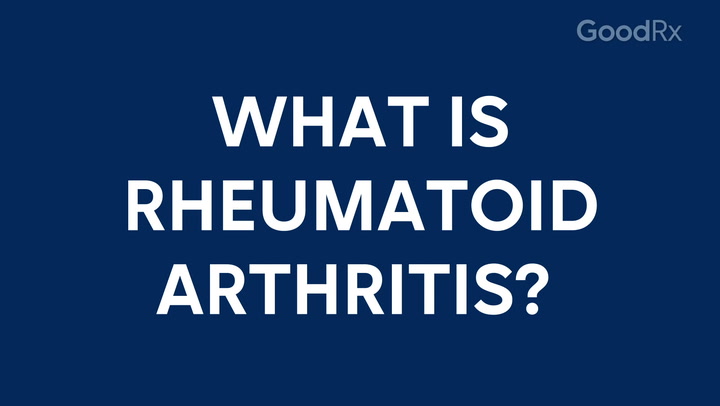
11 Foods to Eat for Joint Health
Key takeaways:
Joints are the parts of the body where bones meet. They can become sore and swollen due to injury or diseases, such as arthritis.
Anti-inflammatory foods — such as cruciferous vegetables, fruits, seeds, and fatty fish — may help limit inflammation and pain in arthritic joints.
Being physically active can also help prevent or slow down joint issues like arthritis.
Table of contents

Your joints are the parts of the body where two or more bones come together. Your body has lots of joints, from your shoulders and elbows to your hips, hands, and knees. Joints also include the soft tissues around your bones, such as the cartilage, tendons, and ligaments.
A number of diseases can affect your joints and cause pain, swelling, and soreness. Arthritis is a common joint disorder, and there are several types, including osteoarthritis, gout, and rheumatoid arthritis.
Strains, sprains, torn ligaments, and dislocations can also impact joints. Wear and tear over time can cause overuse conditions, such as bursitis and tendinitis. With all of the potential issues, figuring out the cause of your joint pain is the first step to handling problems.
Save over 40% on Qsymia with GoodRx
Discover the once daily Qsymia for weight management. Qsymia is for adults and children 12-17 in combination with a healthy diet and regular exercise.

The good news is that there are many ways you can protect your joints. Paying attention to your diet can have a positive impact on your joints, even before you’re diagnosed with a joint problem.
Here are the top 11 foods for joint health (along with some foods to avoid).
1. Sweet peppers
Red, yellow, green, and orange peppers are an excellent source of vitamin C. In fact, they have even more vitamin C than oranges! Joint health includes taking care of the cartilage — the hard, slippery, flexible tissue that covers your bones at a joint. Vitamin C helps stimulate the natural production of collagen, an important part of joint cartilage.
Vitamin C helps in other ways, too. Research shows that vitamin C affects the microbiome in a way that reduces inflammation in the body. This can be especially helpful if you have an inflammatory joint condition like rheumatoid arthritis.
On the flip side, not getting enough vitamin C can make joint problems worse. Vitamin C deficiency slows down collagen synthesis and can lead to joint pain. So it’s important to include a variety of vitamin C-rich foods, such as strawberries, broccoli, citrus fruits, and tomatoes, in your diet.
2. Cruciferous vegetables
Vegetables are an important part of any balanced and nutritious diet. In addition to their other benefits, many cruciferous vegetables contain sulforaphane. This natural compound has been shown to block the inflammatory process and slow down cartilage damage caused by osteoarthritis. Sulforaphane levels go down with cooking, so eating these vegetables raw is best.
Got joint pain? There are different causes of painful joints, and treatment depends on the cause. So it’s important to figure out why your joints hurt.
Strategies for happy joints: These lifestyle tips can support your joint health over the years.
Foods to avoid with arthritis: From fried to sugary foods, what you eat and drink can play a role in inflammation and joint health. A registered dietitian weighs in.
Vegetables with sulforaphane include:
Broccoli
Cabbage
Brussels sprouts
Cauliflower
Bok choy
And guess what? These vegetables also contain antioxidants, calcium, and fiber — each of which plays its own role in keeping bones and joints healthy.
Read more like this
Explore these related articles, suggested for readers like you.
3. Fatty fish
Docosahexaenoic acid (DHA) omega-3 fats in oily, fatty fish — such as salmon and trout — may be beneficial if your joint pain is caused by inflammatory arthritis. A review of 20 studies found that rheumatoid arthritis symptoms improved when people began eating more fish that have omega-3 fat.
Don’t like fish? Fish oil supplements can help, too.
4. Microalgae
If you follow a vegan diet, are allergic to fish, or simply don’t like salmon or trout, there’s a plant-based way to get omega-3 fats such as DHA. Microalgae like spirulina are high in omega-3 fats, and are available in a number of foods and beverages. One study showed that eating foods supplemented with microalgae lessens rheumatoid arthritis symptoms.
Spirulina can help protect joints in other ways, too. In fact, spirulina has so many benefits it’s used by NASA as a supplement to help keep astronauts healthy in space.
5. Chia seeds
Chia seeds are not only rich in omega-3 fatty acids, they’re also anti-inflammatory and contain antioxidants. A 2020 study (in rats) found that using chia seeds as a natural source of antioxidants and anti-inflammatory compounds can help prevent arthritis. Another study found that a steady diet of chia seeds can increase bone density. More research is needed in humans before strong conclusions can be made.
6. Cherries
Both cherries and cherry juice have been linked to a lower risk of gout, a type of inflammatory arthritis that usually affects toe joints. Gout is caused by a buildup of uric acid in the body, and cherries may help lower uric acid concentrations.
7. Turmeric
Turmeric is a yellow spice known for its anti-inflammatory properties. Studies show that turmeric may be helpful in reducing inflammation and symptoms in people with osteoarthritis.
But the body doesn’t absorb its active ingredient — curcumin — very well. And most studies on its health effects use turmeric supplements. So keep in mind that a sprinkle of turmeric in recipes won’t offer the same therapeutic dose as supplements.
8. Berries
Many types of berries contain polyphenolic flavonoids, which have antioxidant, anti-inflammatory, and pain-relieving effects. Studies show that they may help lessen pain and inflammation in people with osteoarthritis and rheumatoid arthritis. Some tasty options include:
Blueberries
Raspberries
Strawberries
Pomegranates
9. Pineapple
This tropical fruit contains bromelain, an enzyme that may help lessen joint pain caused by osteoarthritis and rheumatoid arthritis. Research suggests it does this in several different ways, including by protecting cartilage around the joints.
Make sure to get a whole pineapple and use the core (middle), which has the most bromelain. To make it easier to eat, blend it into smoothies to break down the woody stem.
10. Nuts and seeds
Many nuts and seeds are an excellent source of protein along with antioxidants and minerals. Some also contain alpha linoleic acid (ALA), a type of omega-3 fatty acid that contains anti-inflammatory properties. There are lots of options when it comes to nuts and seeds, including:
Walnuts
Almonds
Flaxseeds
Make sure to look for options with low or no salt.
11. Onions
Onions, especially red and yellow onions, contain quercetin. Quercetin has a number of beneficial effects, and has been shown to help prevent arthritis from worsening.
Other foods that contain quercetin include:
Citrus fruits
Capers
Apples
Kale
Blueberries
What makes a food good for your joints?
There’s a pretty wide range of foods that are good for joints. Many of the foods on our list contain antioxidants or are high in omega-3 fats.
Anti-inflammatory diets have gotten a lot of attention recently. When it comes to arthritis, some studies show that eating a strict anti-inflammatory diet may help. But other studies show it doesn’t make much difference. So more research is needed.
In 2022, a team of researchers developed a special anti-inflammatory “ITIS” diet — a diet designed to reduce joint pain in people with rheumatoid arthritis. The diet was loosely based on the Mediterranean diet, but also included specific anti-inflammatory ingredients, such as turmeric, pineapple, and seeds rich in omega-3. Overall, the researchers found that the anti-inflammatory diet helped.
What foods should you avoid?
Some foods can worsen inflammation. So when joint pain is inflammatory in nature, such as in rheumatoid arthritis or lupus, it makes sense to cut down on inflammatory foods. Examples of foods that make inflammation worse include:
Simple carbohydrates, such as refined grains and sweeteners
Salty foods, like many ultra-processed foods and packaged snacks
High-purine foods and drinks, like organ meats, processed meats, and alcohol
Products with added sugar
Fried foods
Keep in mind, there isn’t enough evidence to say that eating fewer inflammatory foods will definitely help lessen joint symptoms. But limiting these foods can lower inflammation in the body and help support your health in general.
What else can you do for joint health?
Being physically active is an important way to prevent or slow down joint disorders. This works in several ways. First, it helps strengthen the muscles around your joints to protect them from injury. It also helps you maintain a balanced weight, which reduces joint strain. And using your joints regularly keeps them flexible. This will help you move better over time.
Aim to get at least 150 minutes of moderate-intensity or 75 minutes of vigorous-intensity aerobic physical activity each week. But if you can’t do that much, even a little bit helps.
The bottom line
You can take care of your joints with a balanced diet that’s filled with antioxidants and anti-inflammatory foods. Include berries, cruciferous vegetables, cherries, and pineapple as your fruit and vegetable choices. Look for foods that contain omega-3 fatty acids, like fatty fish, and consider adopting a Mediterranean-style diet. Add in some physical activity to round out a healthy lifestyle plan that will benefit your joint health.
Why trust our experts?



References
AlFadhly, N. K. Z., et al. (2023). Trends and technological advancements in the possible food applications of spirulina and their health benefits: A review. Molecules.
Arthritis Foundation. (n.d.). Anti-inflammatory diet do’s and don’ts.
Arthritis Foundation. (n.d.). Benefits of exercise for osteoarthritis.
Arthritis Foundation. (n.d.). Best nuts and seeds for arthritis.
Basu, A., et al. (2018). Dietary fruits and arthritis. Food & Function.
Bustamante, M. F., et al. (2020). Design of an anti-inflammatory diet (ITIS diet) for patients with rheumatoid arthritis. Contemporary Clinical Trials Communications.
Chakraborty, A. J., et al. (2021). Bromelain a potential bioactive compound: A comprehensive overview from a pharmacological perspective. Life.
Chañi, E. M. M., et al. (2018). Long-term dietary intake of chia seed is associated with increased bone mineral content and improved hepatic and intestinal morphology in Sprague-Dawley rats. Nutrients.
Chen, P. E., et al. (2019). Effectiveness of cherries in reducing uric acid and gout: A systematic review. Evidence-Based Complementary and Alternative Medicine.
Dawczynski, C., et al. (2018). Docosahexaenoic acid in the treatment of rheumatoid arthritis: A double-blind, placebo-controlled, randomized cross-over study with microalgae vs. sunflower oil. Clinical Nutrition.
Genel, F., et al. (2020). Health effects of a low-inflammatory diet in adults with arthritis: A systematic review and meta-analysis. Journal of Nutritional Science.
Gioxari, A., et al. (2018). Intake of ω-3 polyunsaturated fatty acids in patients with rheumatoid arthritis: A systematic review and meta-analysis. Nutrition.
Halegrahara, N., et al. (2017). Therapeutic effect of quercetin in collagen-induced arthritis. Biomedicine and Pharmacotherapy.
Maddiboyina, B., et al. (2023). Food and drug industry applications of microalgae Spirulina platensis: A review. Journal of Basic Microbiology.
MedlinePlus. (2019). How much exercise do I need?
MedlinePlus. (2024). Joint disorders.
Mirza, M. A., et al. (2023). Quercetin as a therapeutic product: Evaluation of its pharmacological action and clinical applications — A review. Pharmaceuticals.
Mohamed, D. A., et al. (2020). Anti-inflammatory potential of chia seeds oil and mucilage against adjuvant-induced arthritis in obese and non-obese rats. Journal of Basic and Clinical Physiology and Pharmacology.
Moon, S., et al. (2021). The anti-arthritis effect of sulforaphane, an activator of Nrf2, is associated with inhibition of both B cell differentiation and the production of inflammatory cytokines. PLoS One.
National Institutes of Health Office of Dietary Supplements. (2021). Vitamin C.
Nikiphorou, E., et al. (2023). Nutrition and its role in prevention and management of rheumatoid arthritis. Autoimmunity Reviews.
Pothacharoen, P., et al. (2021). Bromelain extract exerts antiarthritic effects via chondroprotection and the suppression of TNF-α–induced NF-κB and MAPK signaling. Plants.
Remirez, D., et al. (2002). Inhibitory effects of Spirulina in zymosan-induced arthritis in mice. Mediators of Inflammation.
Schönenberger, K. A., et al. (2021). Effect of anti-inflammatory diets on pain in rheumatoid arthritis: A systematic review and meta-analysis. Nutrients.
Shep, D., et al. (2019). Safety and efficacy of curcumin versus diclofenac in knee osteoarthritis: A randomized open-label parallel-arm study. Trials.
Zhang, Y., et al. (2024). Vitamin C alleviates rheumatoid arthritis by modulating gut microbiota balance. BioScience Trends.





























